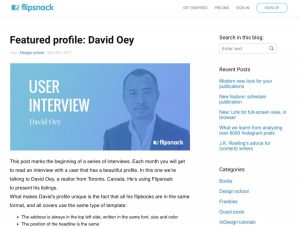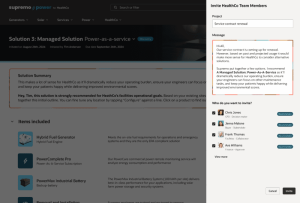— July 13, 2017

TeroVesalainen / Pixabay
Less than a decade ago, the staffing industry was desperately hunting down prospective clients that hadn’t succumbed to a hiring freeze in the face of the Great Recession. The aftermath of those years saw increased focus on client engagement, with staffing firms urgently trying to woo new clients from the competition.
But that time is long gone, and the market has done a complete 180. Though it’s technically your clients who contribute to your revenue, you won’t get very far without quality candidates. The irony is, you likely have job requisitions flooding in from every direction; demand is soaring, particularly in industries like IT, engineering, and healthcare. But talented professionals know they’re wanted, and nothing short of the best candidate experience will make them consider partnering with your staffing firm to fill your clients’ open positions.
But here’s the crux of the challenge: even if you have the world’s most capable and charming recruiters, the underlying process and procedures in your recruiting process will set the tone for candidate engagement. From the way in which your candidates must apply for open positions to the way in which your recruiters communicate with those applicants, the tools and software you choose to leverage are instrumental in laying the foundation of candidate engagement. In other words, it’s your ATS that will impact the candidate experience more than any other factor. Here’s why.
The Job Application Process
How user-friendly is your application process? A recent study found that the average Fortune 500 company’s application includes a massive 62.8 questions. With a limited number of potential applicants willing to spend more than 15 minutes filling out an application, there’s no doubt that a lengthy, un-streamlined application process is hurting the candidate experience.
Housed by your ATS, the job application is often the first touch point between your company and your candidates. You should want to make the process as easy and painless as possible. Just because your staffing software provider gives you the capability to ask unlimited questions in your application doesn’t mean you should take that opportunity. The best staffing software should be able to parse a candidate’s resume into the candidate record, which effectively decreases the need to ask as many questions of the applicant.
Want proof that a shorter job application is more effective? Just look at AT&T, who recently cut the length of their application in half, resulting in a 55% decline in abandonment rate and 100,000 more qualified applicants.
Mobile Responsiveness
A study from Indeed indicates that almost half of all jobseekers search and apply for jobs via their mobile device. If your ATS technology isn’t mobile responsive, you could be losing the attention of a lot of potential candidates.
Your ATS impacts the candidate experience most specifically in how a candidate chooses to interact with your company. If you are unable to cater to their expectations, forcing them off their phones and onto their desktop, the experience is tainted (and, most likely, the candidate will abandon their efforts completely). The desire to search and apply via mobile must be considered when choosing and implementing new staffing software.
The Feedback Loop
One of the most powerful functionalities of an ATS is how it enables you to communicate with any candidate. However, it’s an area where the most mistakes are just waiting to be made.
First, it’s vital to understand that candidates must receive feedback at every point in the process. A study from Career Arc reports that a massive 80% of applicants are unlikely to consider other job openings at the same company if they never received notification about their original application status.
But a quick follow-up email or call isn’t as simple as it sounds. Thanks to hiccups in the staffing software, it’s all too common that multiple recruiters will reach out simultaneously to the same candidate in response to their job application, confusing and irritating the candidate and causing much frustration between those recruiters. The best ATS will ensure a single point of contact for each candidate, complete with communication tracking that reports last contact dates and status notes about where the candidate is the process.
Another ATS functionality that often leads to a bad candidate experience is automation. An automated response email helps to ensure that new applicants always receive feedback that their application has been received. However, automation also opens to door to a highly impersonal candidate experience. Your ATS should make it easy to personalize those emails as much as possible.
Predictive Intelligence
Once upon a time, the ATS was simply a digital, glorified version of your Rolodex. Its evolution has included smart front and back office integration to streamline your operations, as well as user-friendly online job portals, integrations with social media and job boards, and advanced search capabilities for recruiters to track down top talent.
The ATS of the future offers much more and will not only impact the candidate experience but will help to build it. Predictive intelligence is one such area. Picture smarter matching technology between candidates and job openings; imagine alerts that will tell a recruiter when a candidate might be most receptive to a call or email based on their online behavior. These possibilities not only leverage a recruiter’s effectiveness, but also allow those recruiters more time to engage on a human level with their candidates.
There’s no denying that there’s room for improvement is the staffing industry’s approach to candidate experience. Predictive intelligence in staffing software is a powerful tool that can help turn it all around.
Business & Finance Articles on Business 2 Community
(139)
Report Post




